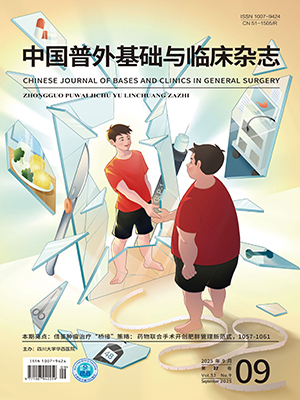ObjectivesTo explore the mechanisms by which ischmic preconditioning (IPC), ischemic postconditioning (IPO) and IPCIPO exert influence on ischemic reperfusion injury (IRI) of the graft of SD rat after pancreas transplantation. MethodsAfter the establishment of diabetic SD rats model by using streptozotocin, 24 rats suffered from pancreas transplantation and were randomly averagely divided into four groups: I/R group, IPC group, IPO group, and IPC-IPO group. Six diabetic SD rats suffered with sham operation were served as SO group. The blood glucose level of rats in each group was detected before and after reperfusion, the contents of malonaldehyde (MDA) and super oxide dismutase (SOD) of pancreas allograft were tested at 2 h after reperfusion, and the apoptosis index (AI) of pancreas allograft was monitored by using TUNEL method. ResultsThe blood glucose level of rats in each group was not significantly different (P gt;0.05). In SO group, the blood glucose level of rats was significantly higher than other groups (P lt;0.01). The blood glucose levels of rats after reperfusion decreased from the levels before reperfusion in I/R group, IPC group, IPO group, and IPC-IPO group (P lt;0.05 or P lt;0.01), furthermore the blood glucose level of rats in I/R group was significantly higher than that in abovementioned three groups (P lt;0.01), although among which the difference was not markedly (P gt;0.05). When compared with I/R group, the MDA contents of rats after reperfusion in IPC group, IPO group, and IPC-IPO group decreased (P lt;0.01), while the SOD contents of rats after reperfusion increased (P lt;0.01). In rats of SO group, the MDA and SOD contents were significantly higher and lower than other groups, respectively (P lt;0.01). The MDA and SOD contents in IPC group, IPO group, and IPC-IPO group were not different (P gt;0.05). The AI of pancreas allograft at 2 h after reperfusion in I/R group 〔(47.31±4.52)%〕, IPC group 〔(26.25±3.17)%〕, IPO group 〔(24.73±3.62)%〕, and IPC-IPO group 〔(25.5±4.15)%〕 were higher than that in SO group 〔(3.16±0.53)%〕, P lt;0.01. The AI of pancreas allograft in IPC group, IPO group, and IPC-IPO group were not different (P gt;0.05), but they were lower than that in I/R group (P lt;0.01). Pathological results showed that injury of pancreas allograft in I/R group was most severe. ConclusionsIPO and IPC are associated with comparable effectiveness to protect graft from IRI during pancreas transplantation. The combined protective effects of IPC and IPO do not appear to be additive, which is equal to IPC or IPO alone.
Citation: ZHANG Zhaohui,WANG Weizhong,LI Xi,NIU Wancheng,CHEN Dangying,ZHANG Yunmin.. Comparative Study of Protective Effects of IPC, IPO, and IPC-IPO on Ischemic Reperfusion Injury of Pancreas Allograft of Rats. CHINESE JOURNAL OF BASES AND CLINICS IN GENERAL SURGERY, 2011, 18(8): 844-848. doi: Copy
Copyright © the editorial department of CHINESE JOURNAL OF BASES AND CLINICS IN GENERAL SURGERY of West China Medical Publisher. All rights reserved




